Brioche Rolls w/ Milk & Bread Flour
I will be the first to admit that I am not great at making bread! No matter how many people have made it seem easy during quarantine, it is one of the more difficult culinary endeavors! And I have given up on the endeavor on more than one occasion. Things oftentimes don't rise properly. They deflate in the oven. I've definitely killed yeast before. And made more than one loaves that were absolutely entirely inedible! But I've been making No-knead Dutch Oven Bread for the last couple of months with great results. I've even turned it into rolls to make rolls (also visible in that recipe) and squid ink to make Black Rolls. So, I'm feeling confident enough to expand into brioche rolls.
I'm hesitant to call these "rolls" because I'm specifically making brioche as burger buns. I don't know exactly when I got it in my head that brioche is the quintessential burger bun. But it has forever stuck with me that brioche is a "bun." Which would make it not a "roll."
I generally consider anything with butter and/or milk in it a roll. I'm not sure that I could say that that is technically true. I would probably go so far as to say that it's one of those wishy washy culinary things that there is no definitive definition to...
But I like to think of rolls as being decadently buttery and soft, pillowy round loaves of bread that are reserved for Thanksgiving, Christmas, and all of those wintery holidays.
Whereas "buns" are more of a general term for something in which a meat product is squished between.
So, this brioche "roll" recipe seems to fall under both of these scenarios and I am merely calling it a roll because that is more largely encompassing. Because, if I didn't inherently consider brioche a burger bun, I would absolutely call it a roll.
This recipe is adapted from The Clever Carrot's Light Brioche Hamburger Buns.
Gallery
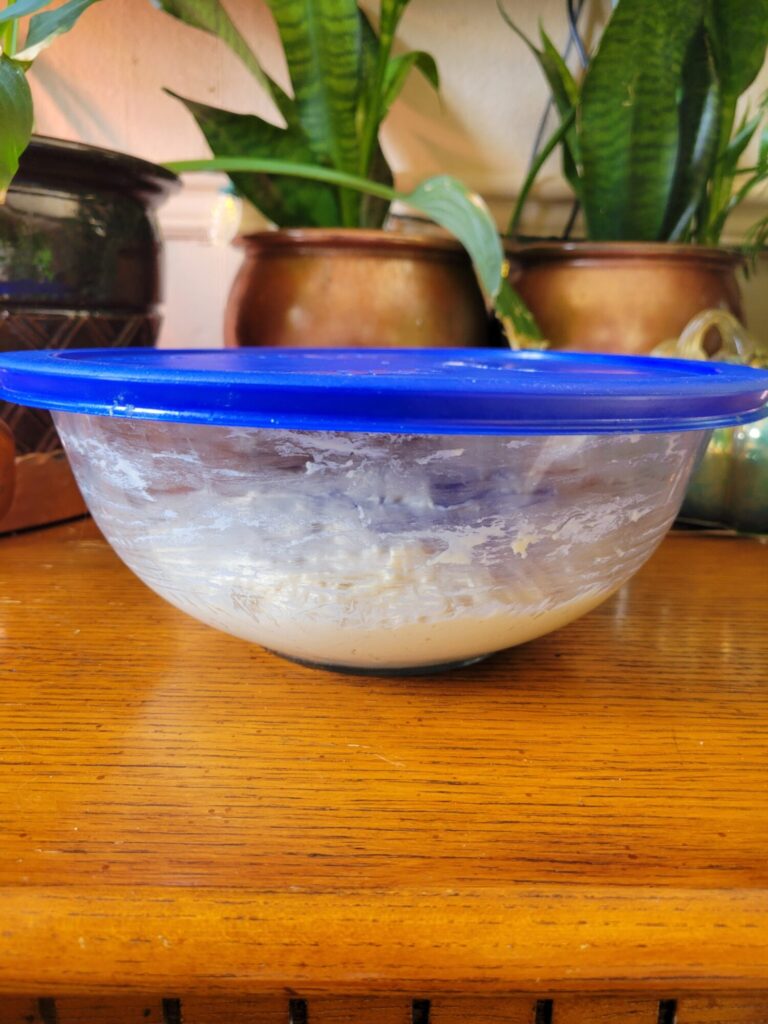
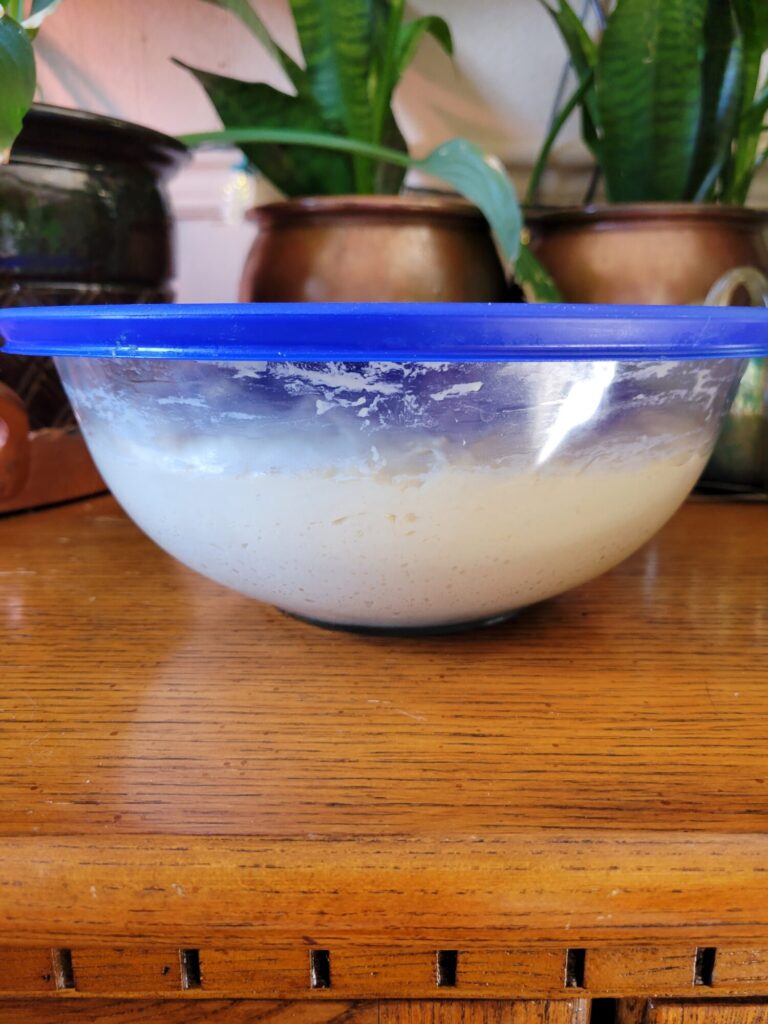
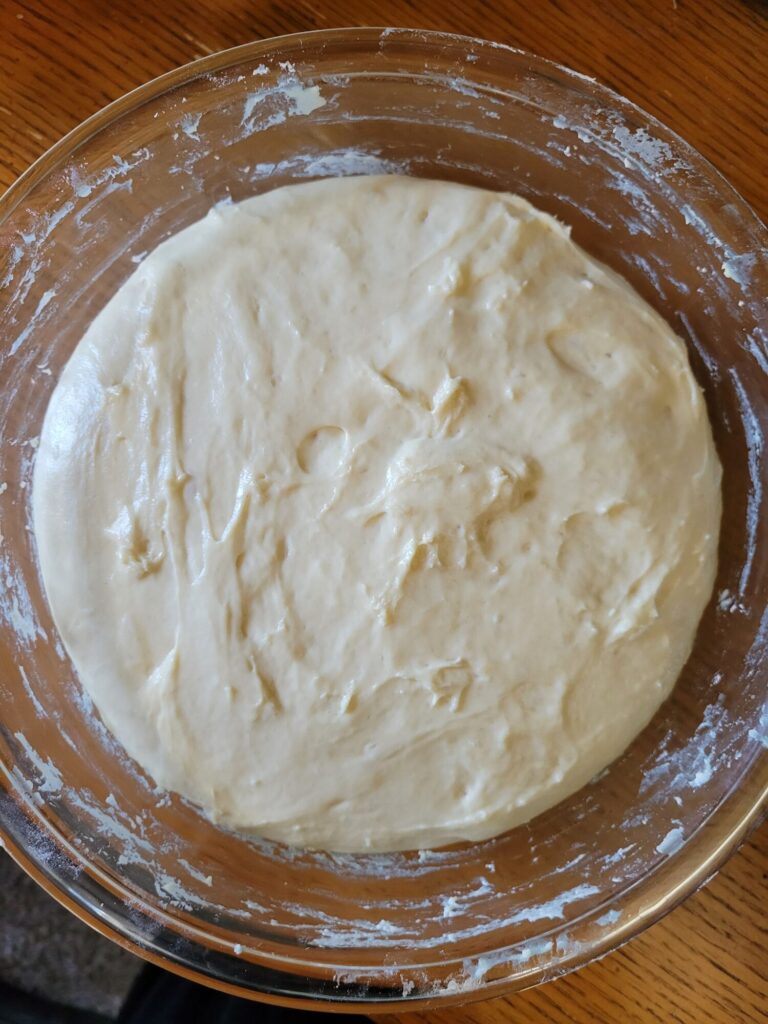
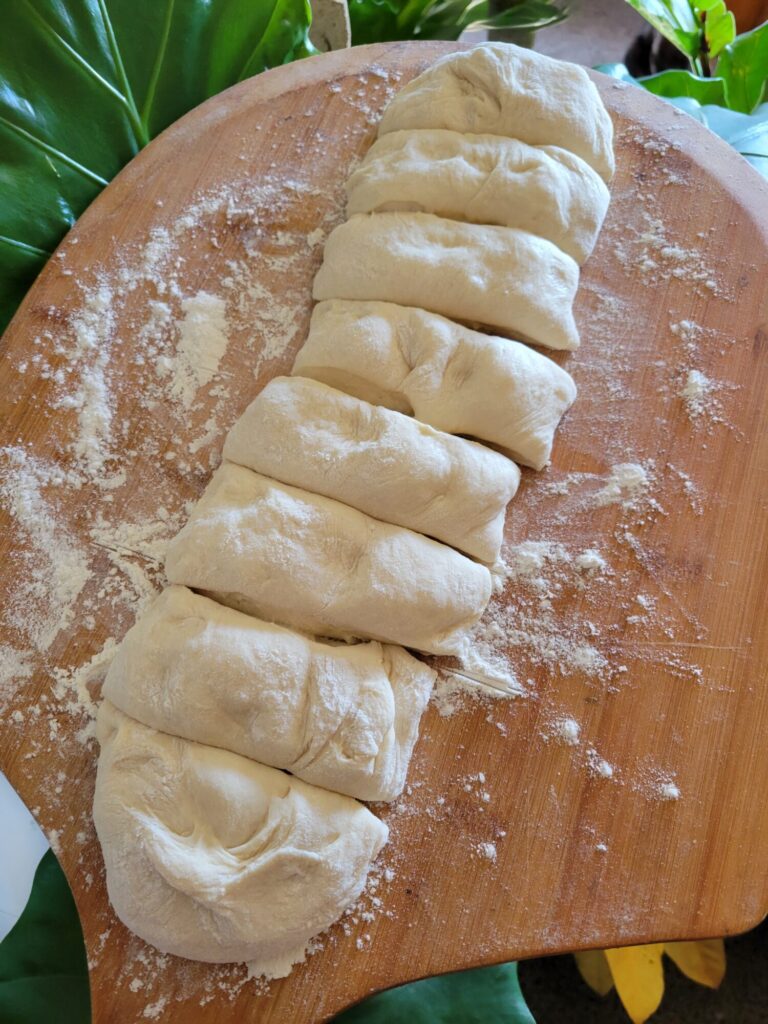
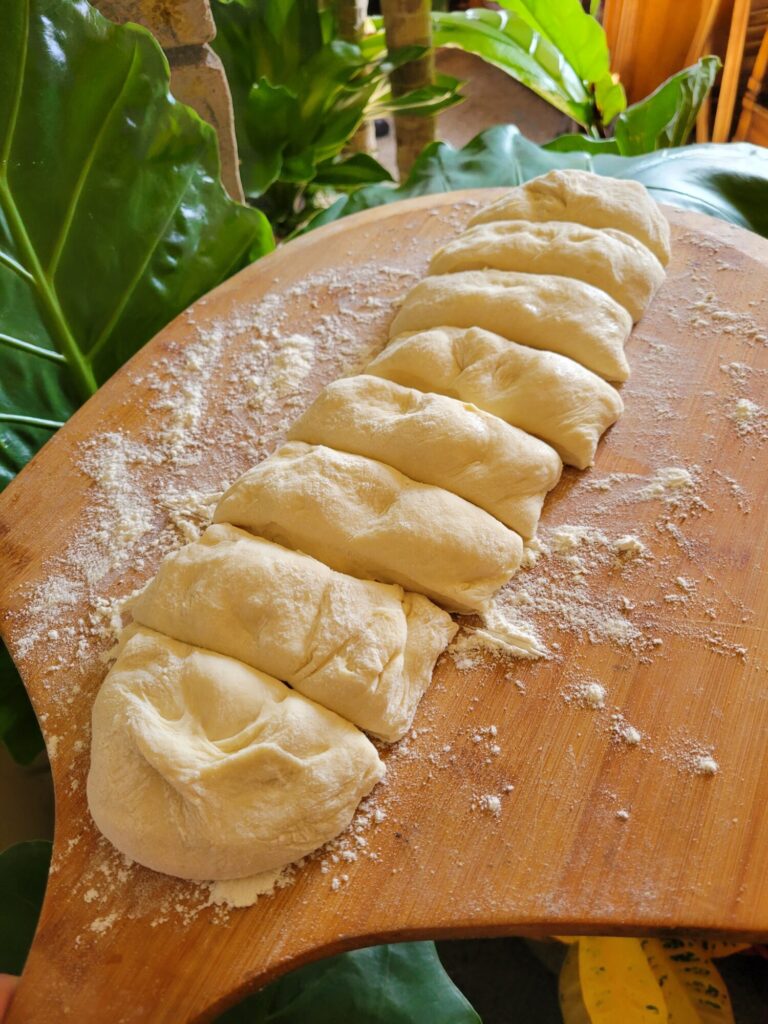
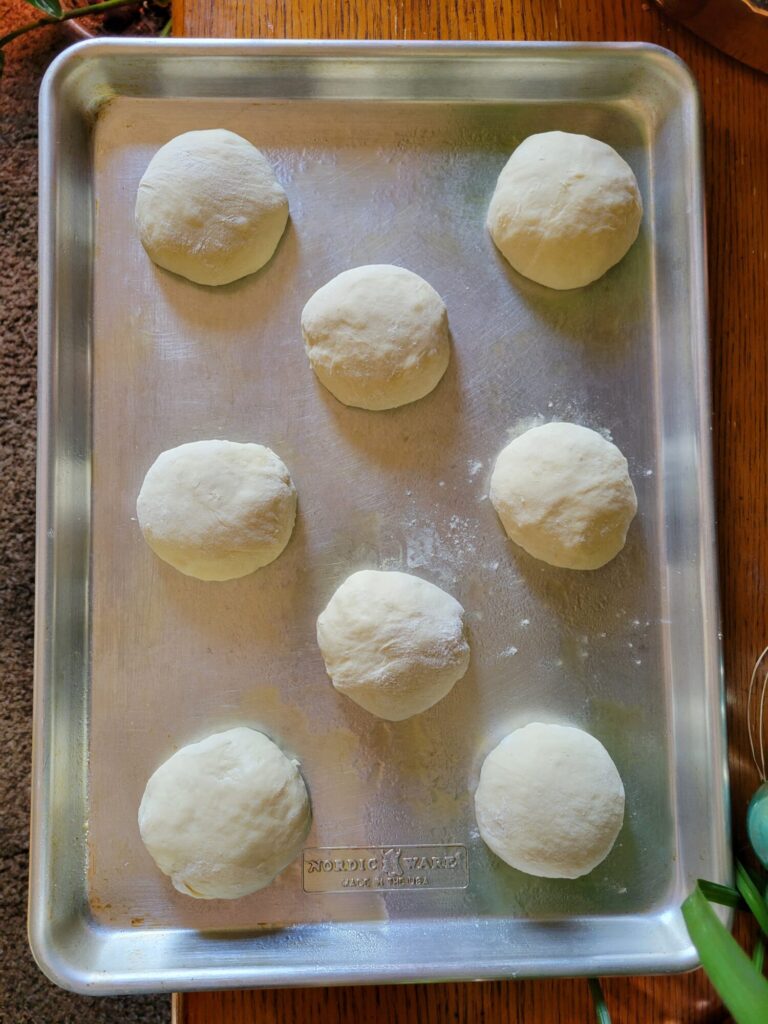
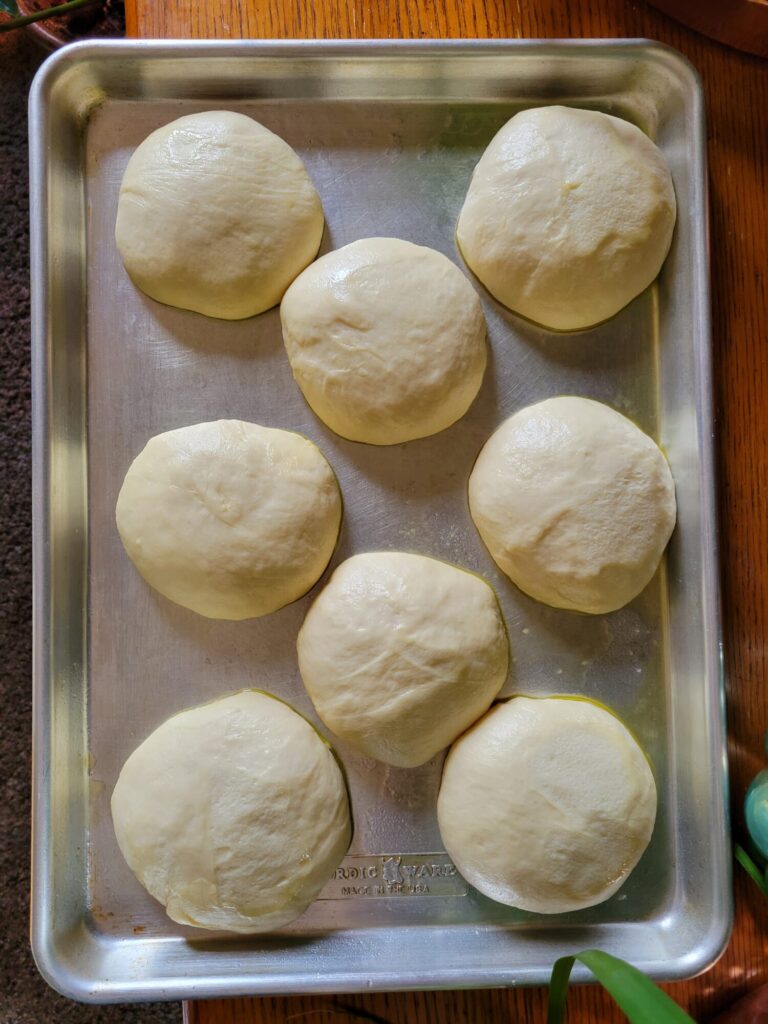
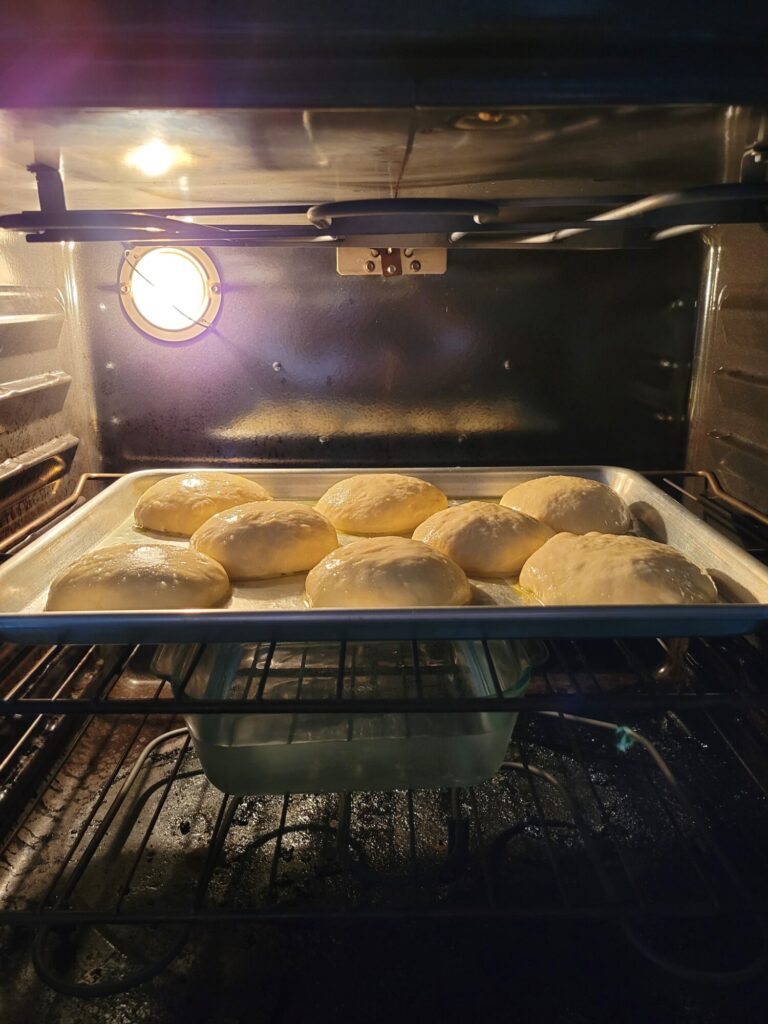
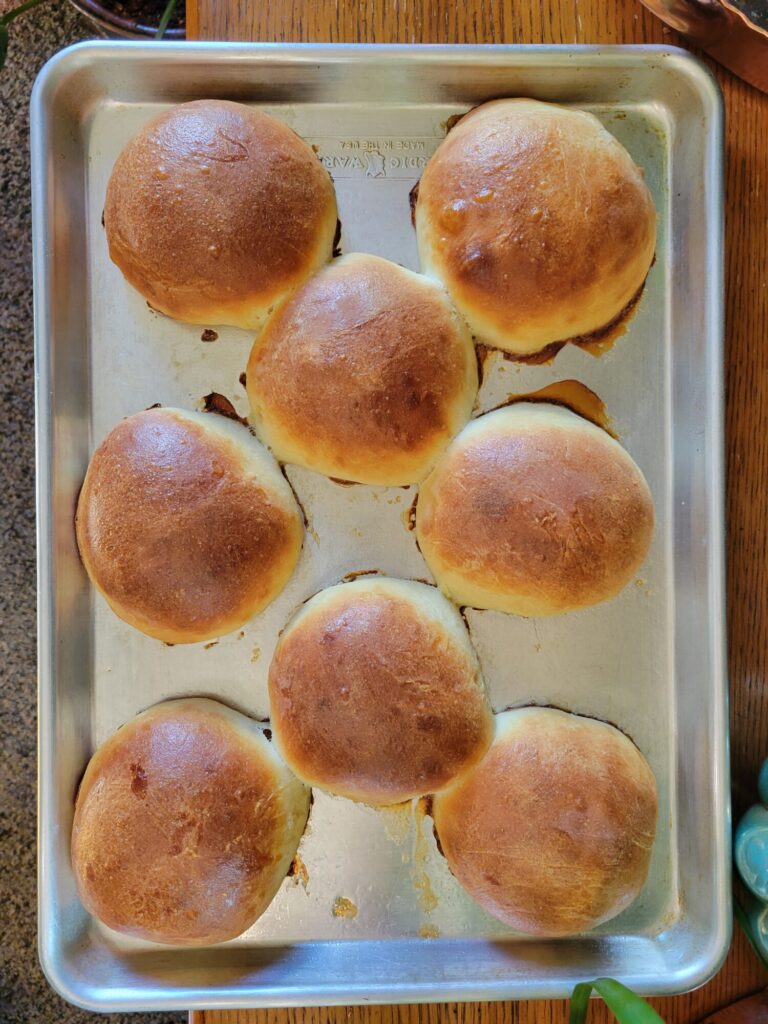
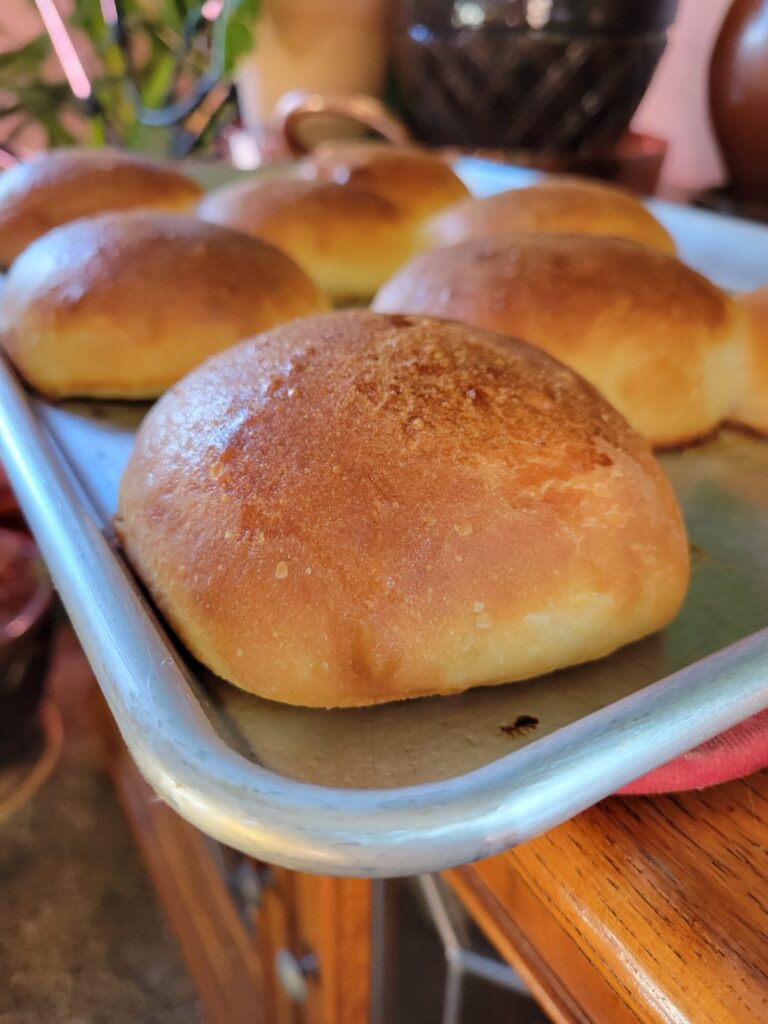
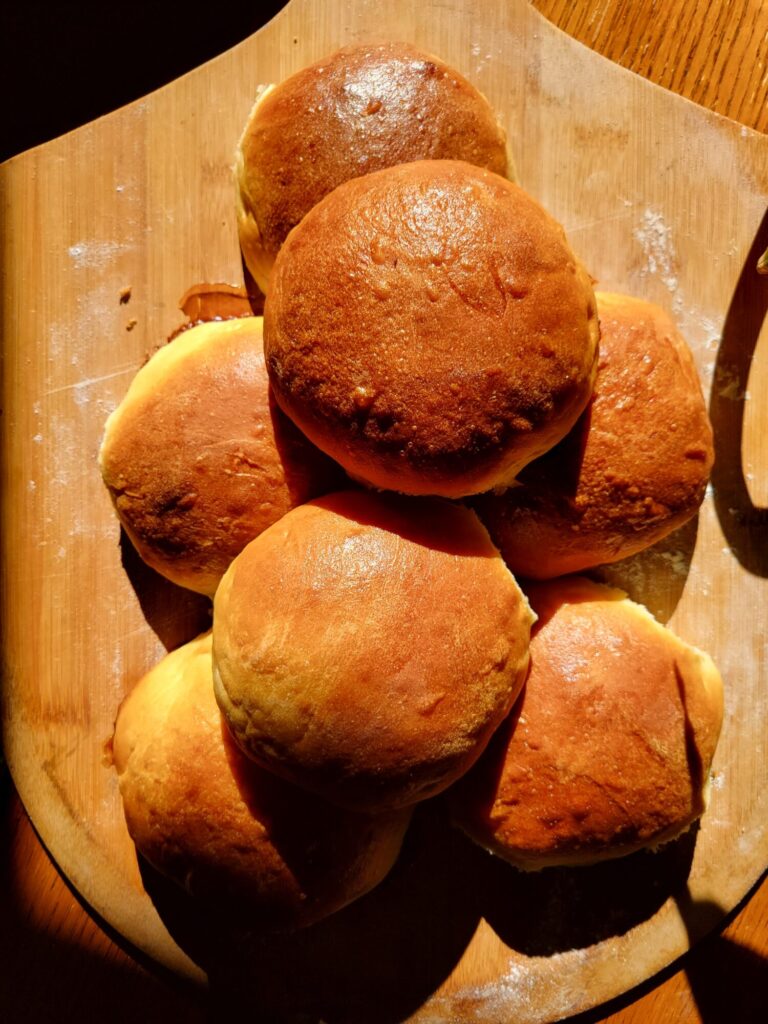
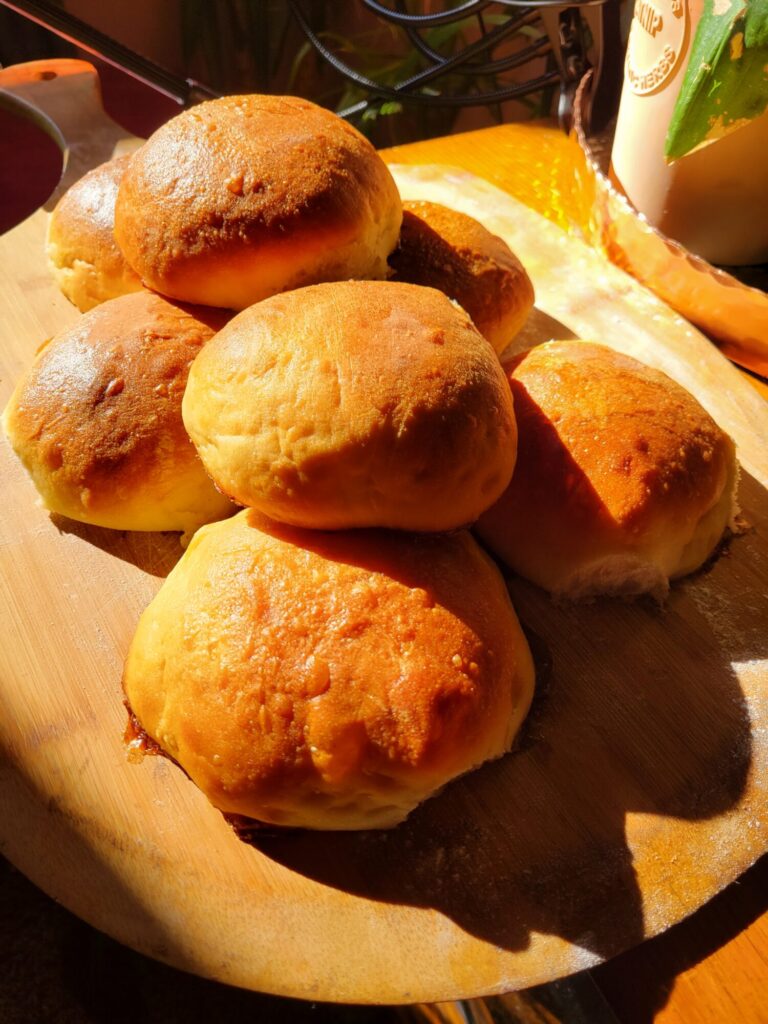
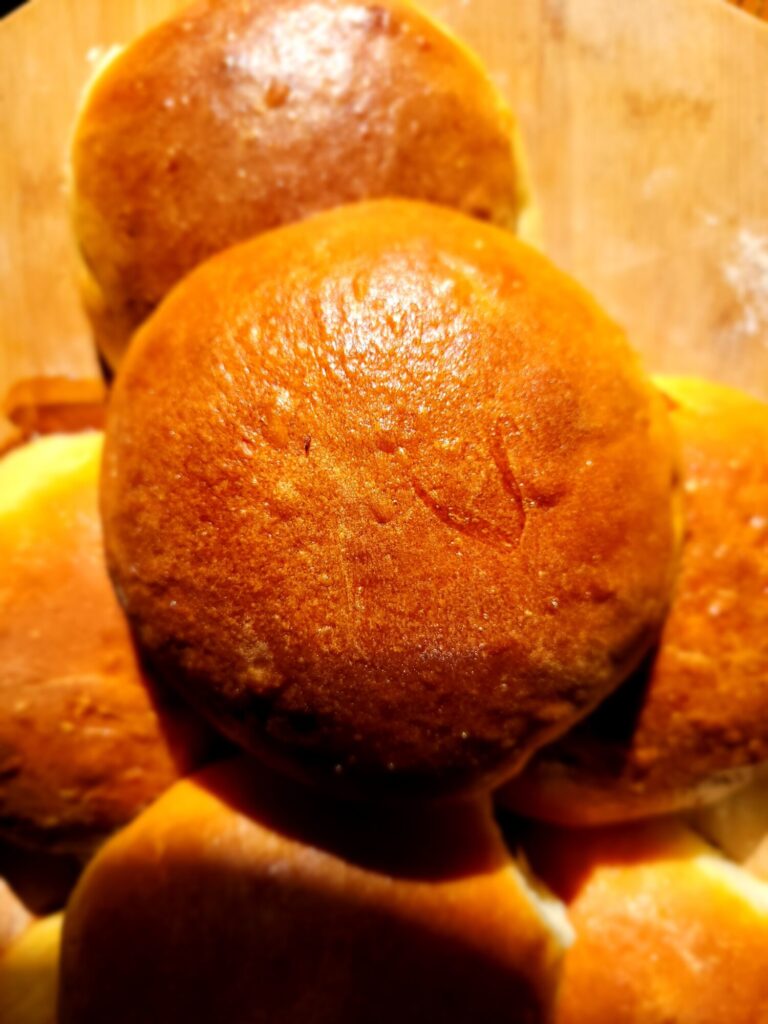
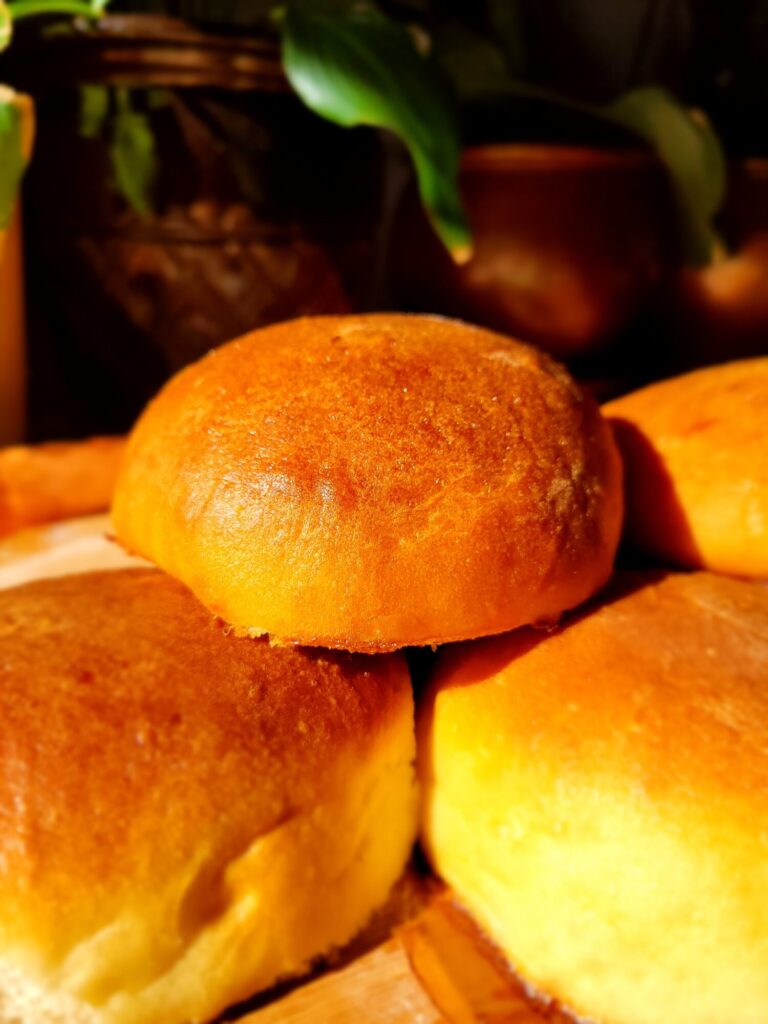
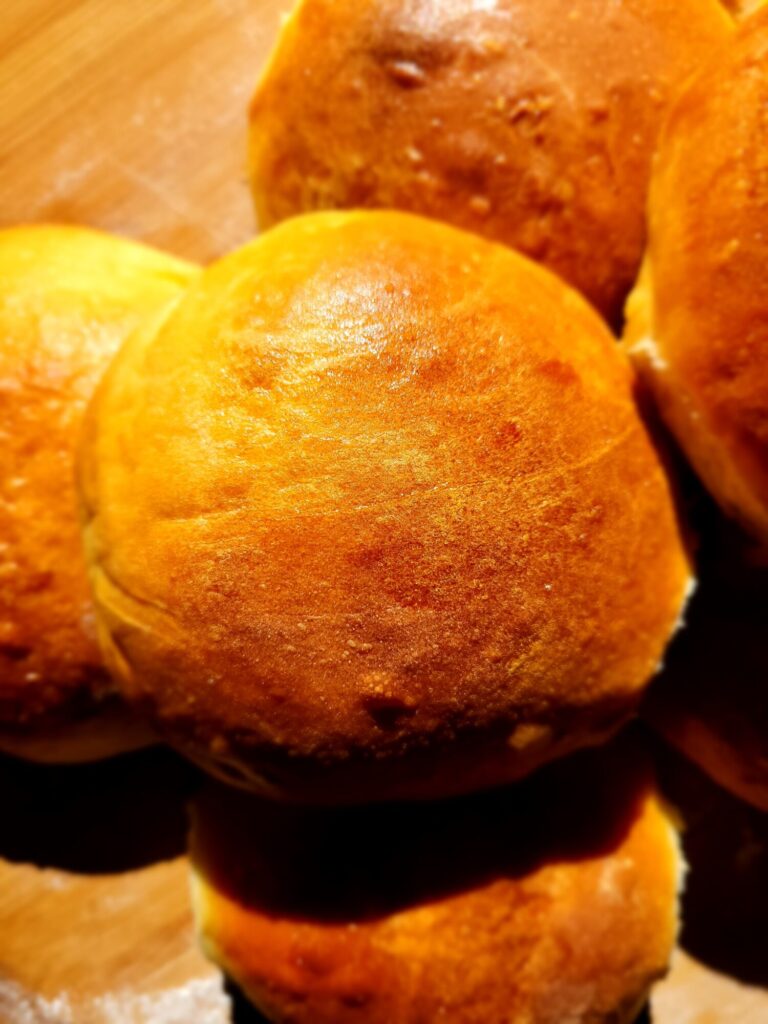
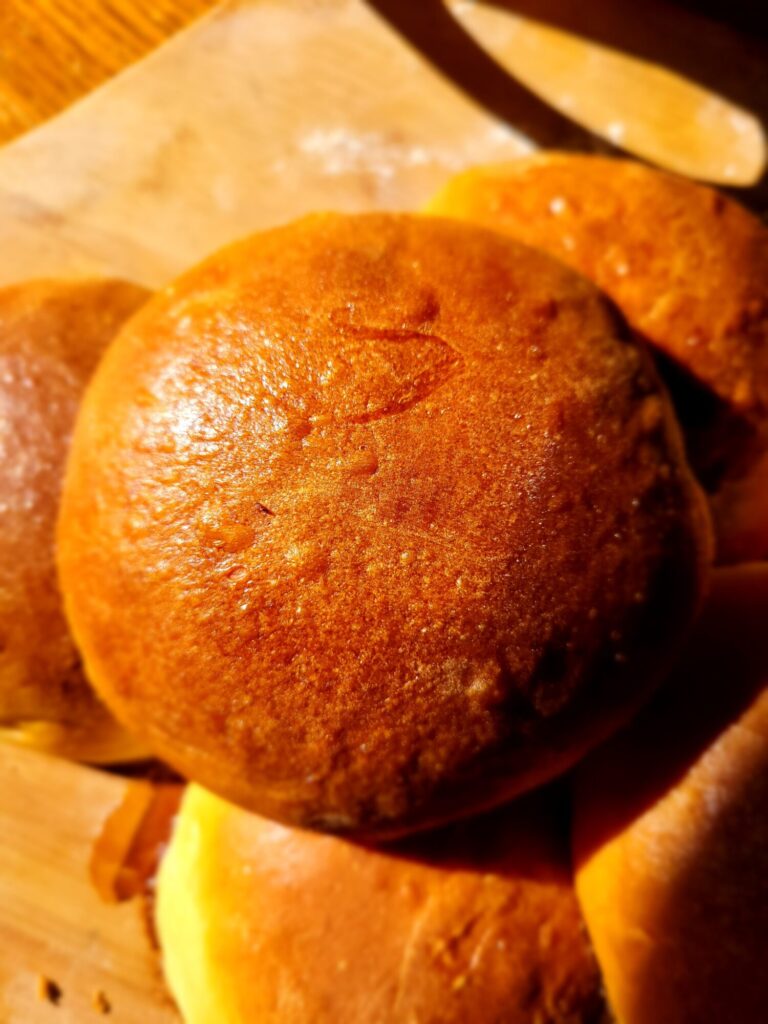
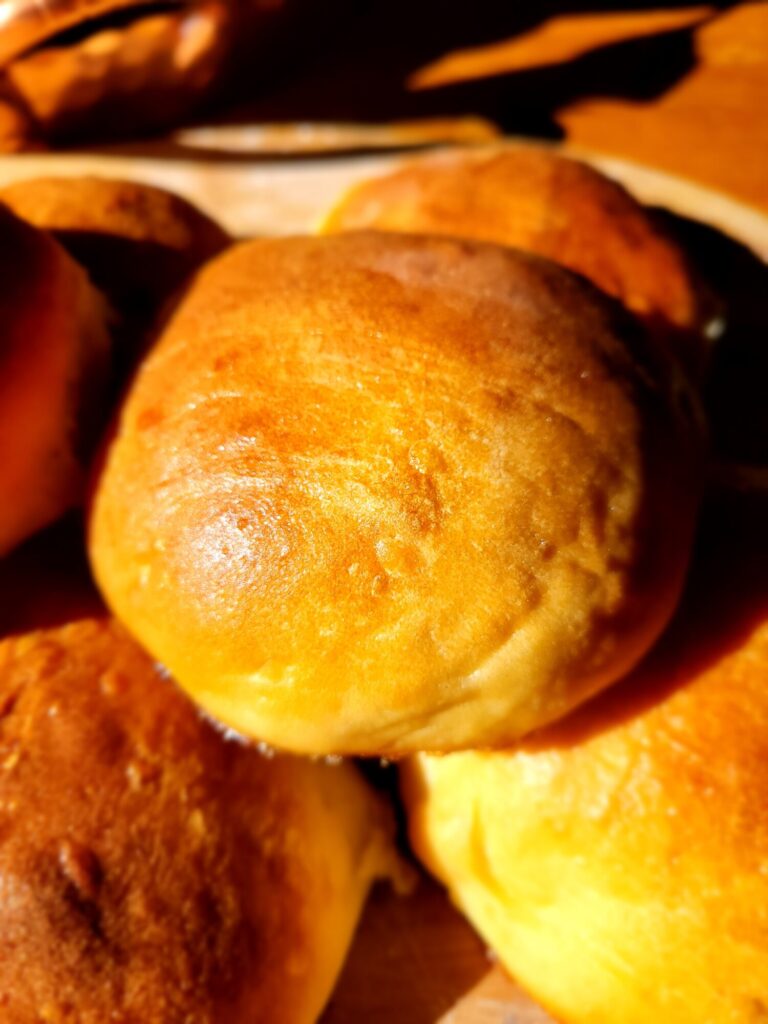
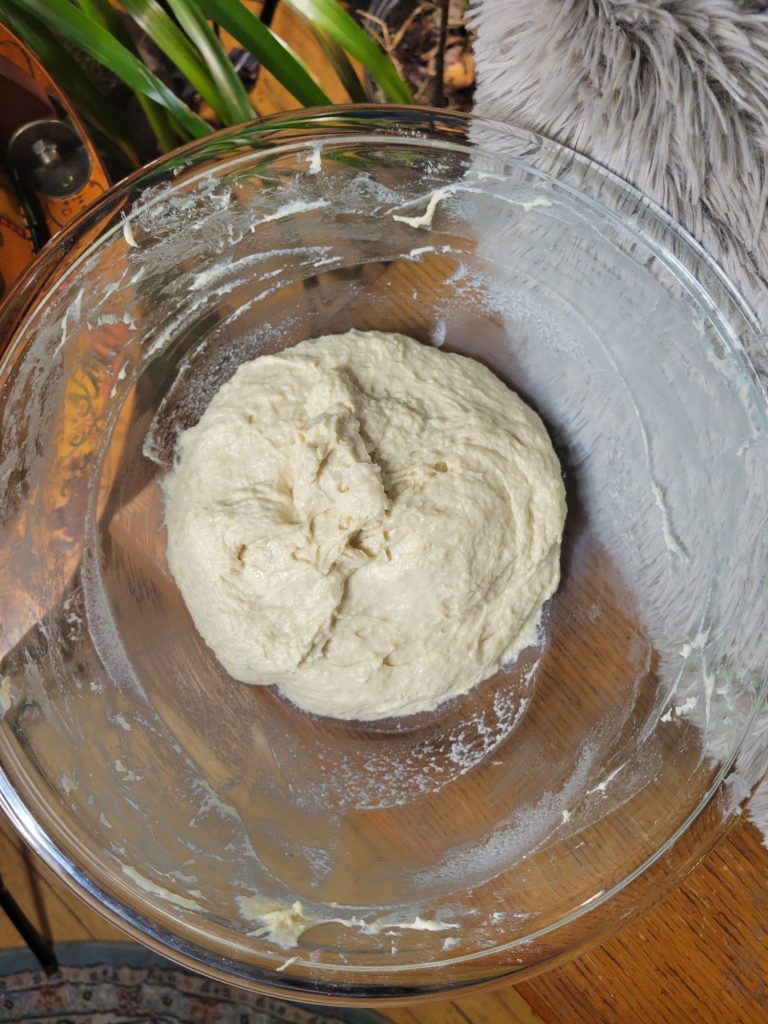
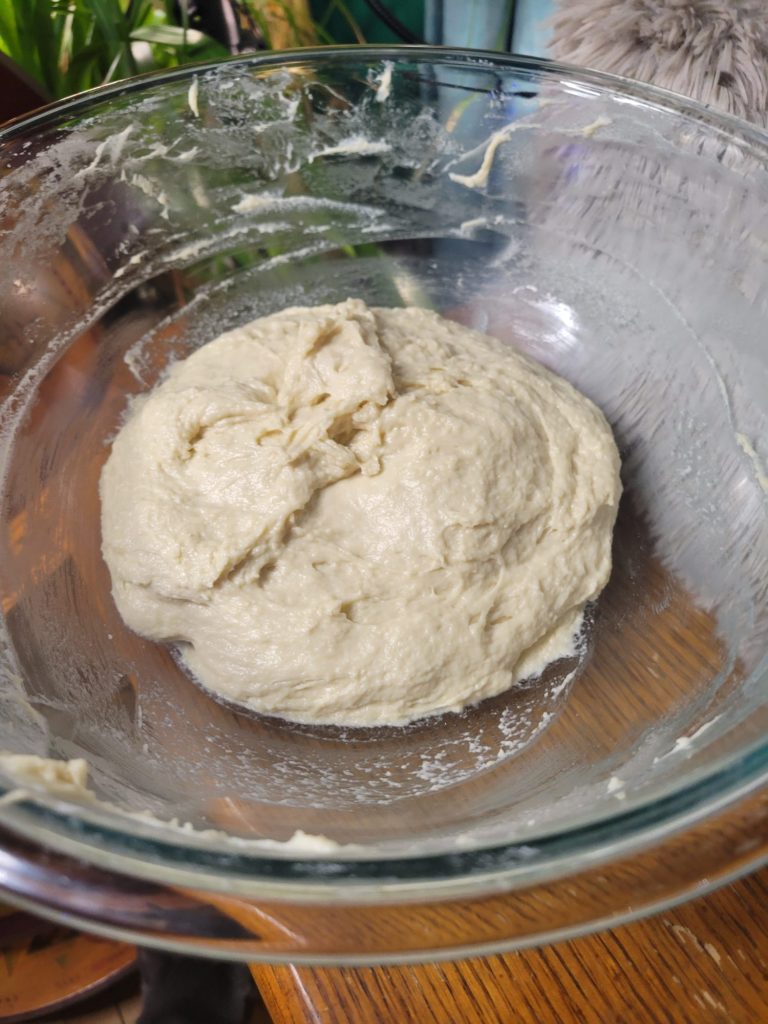
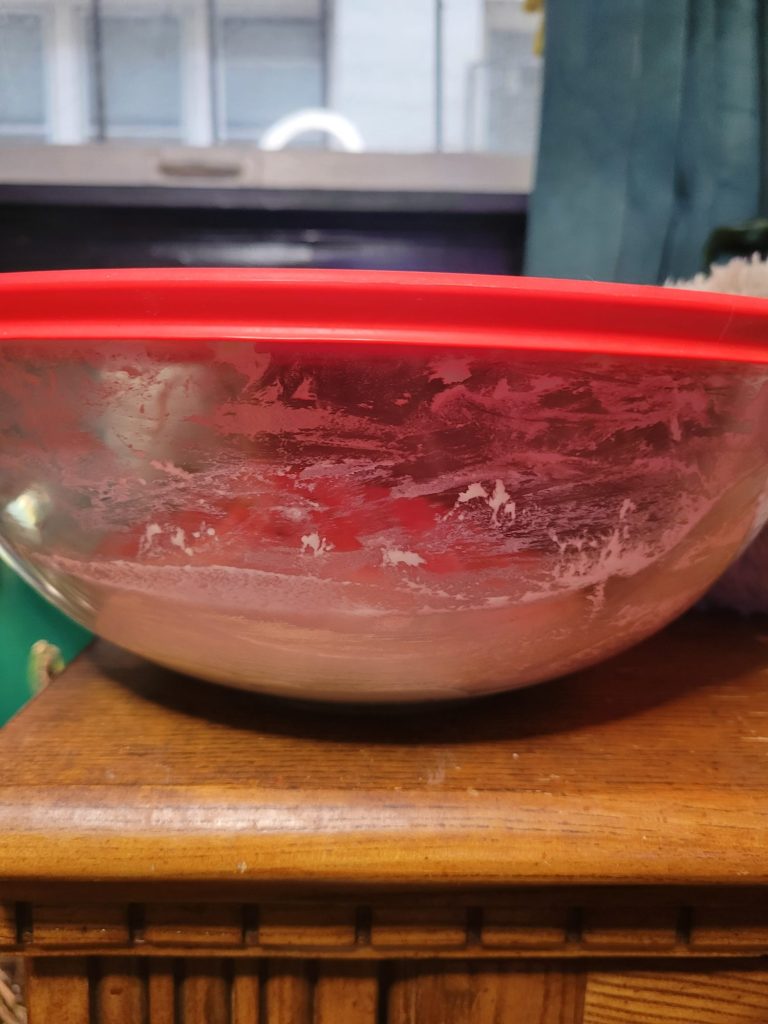
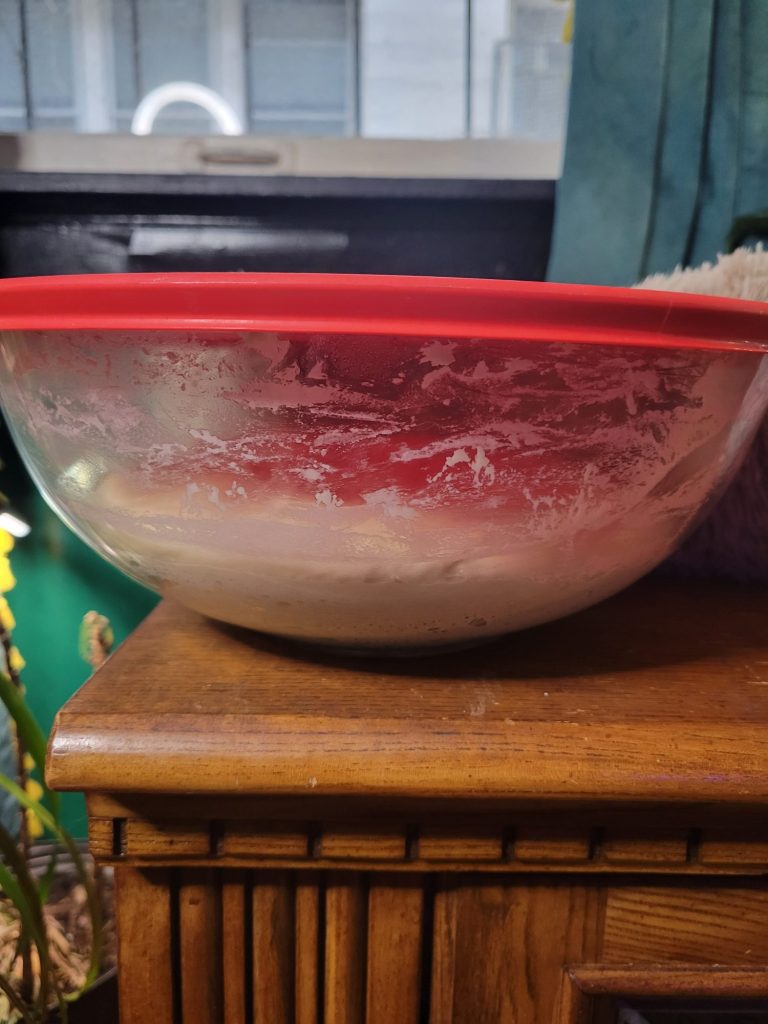
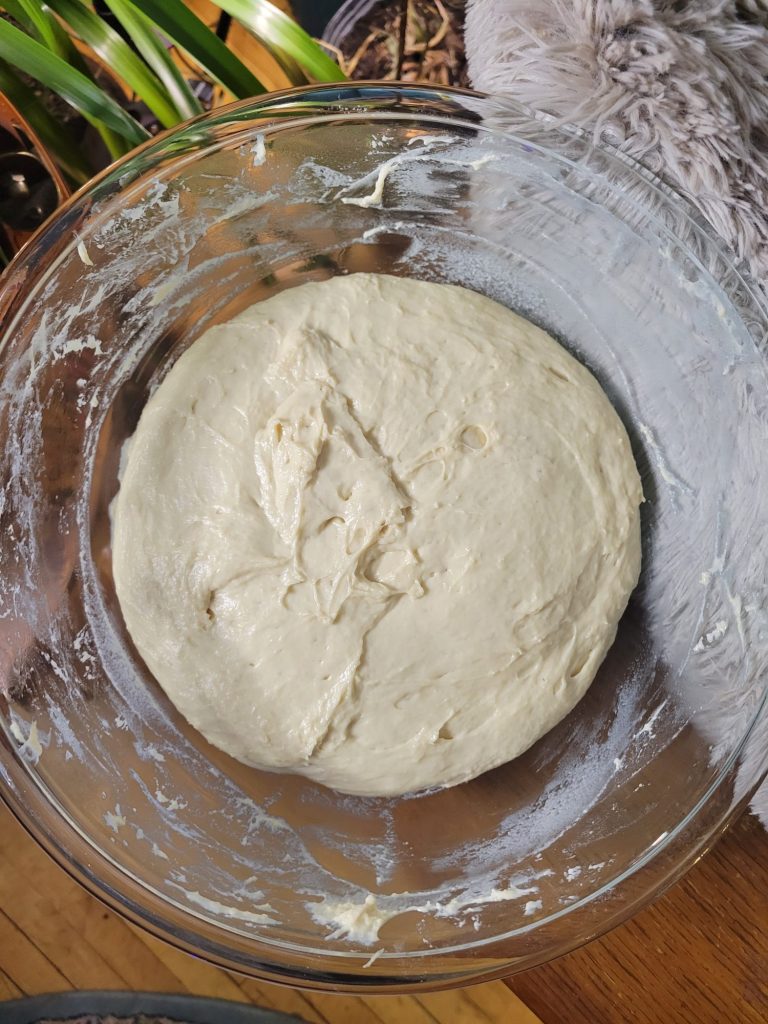
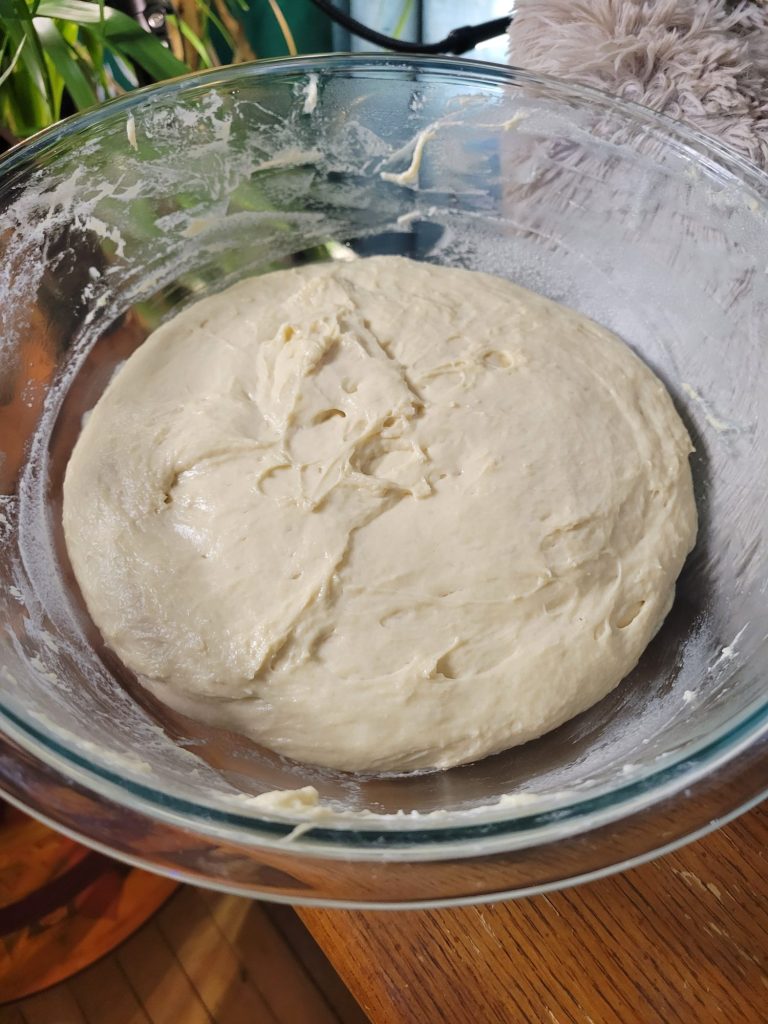
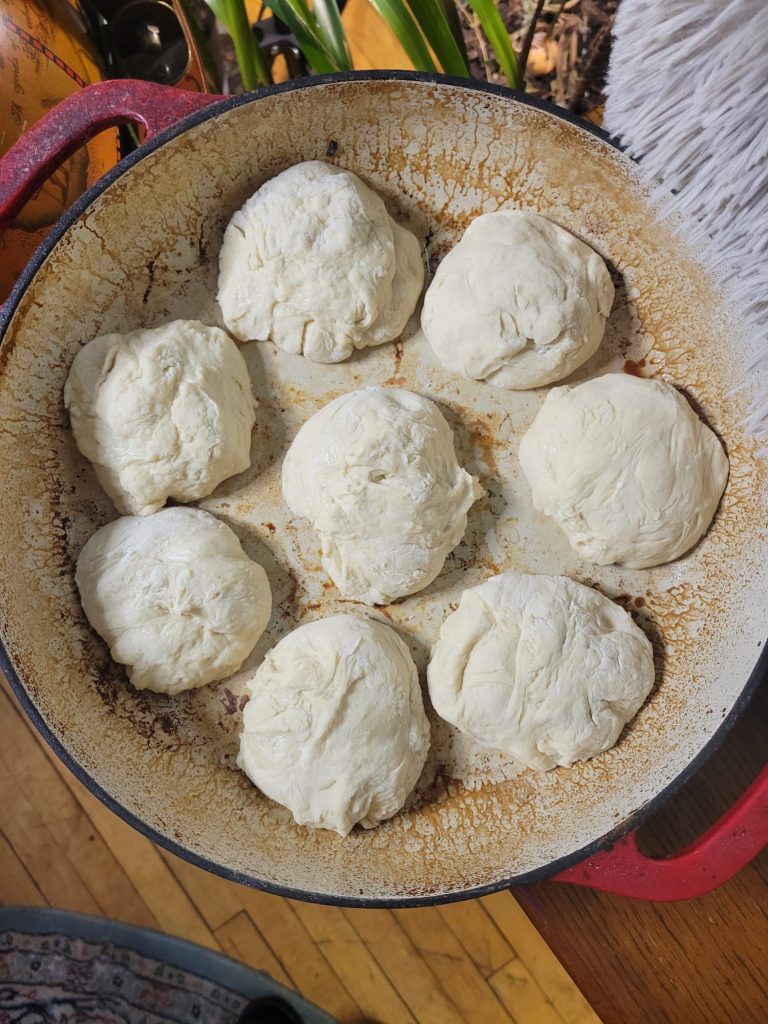
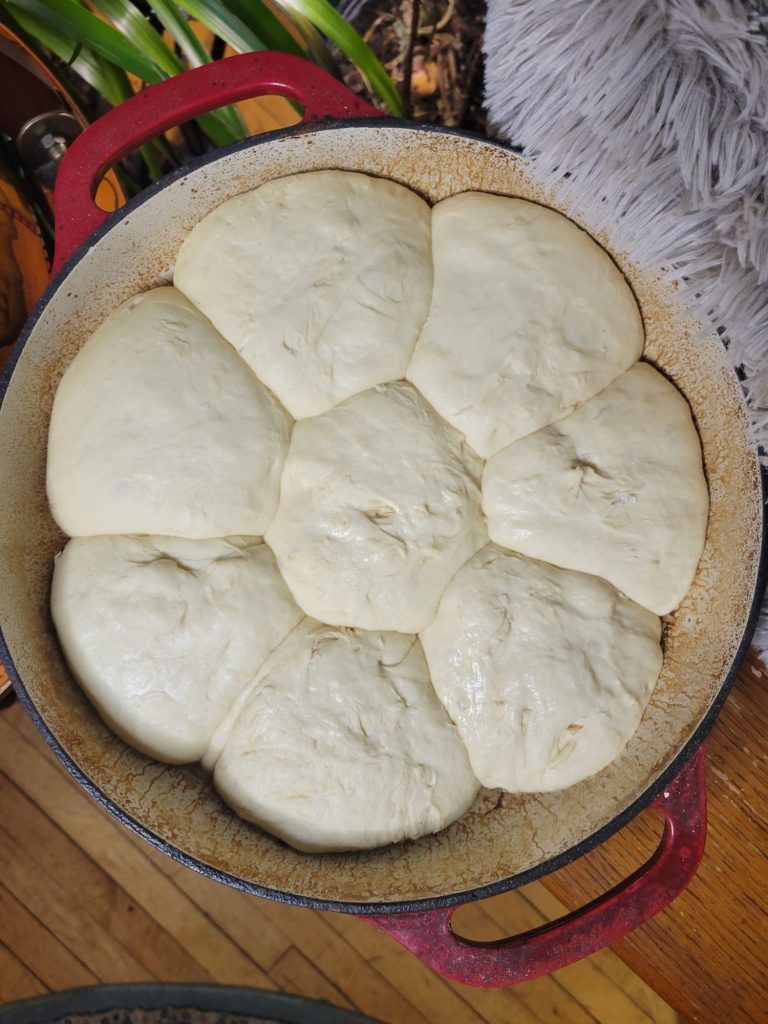
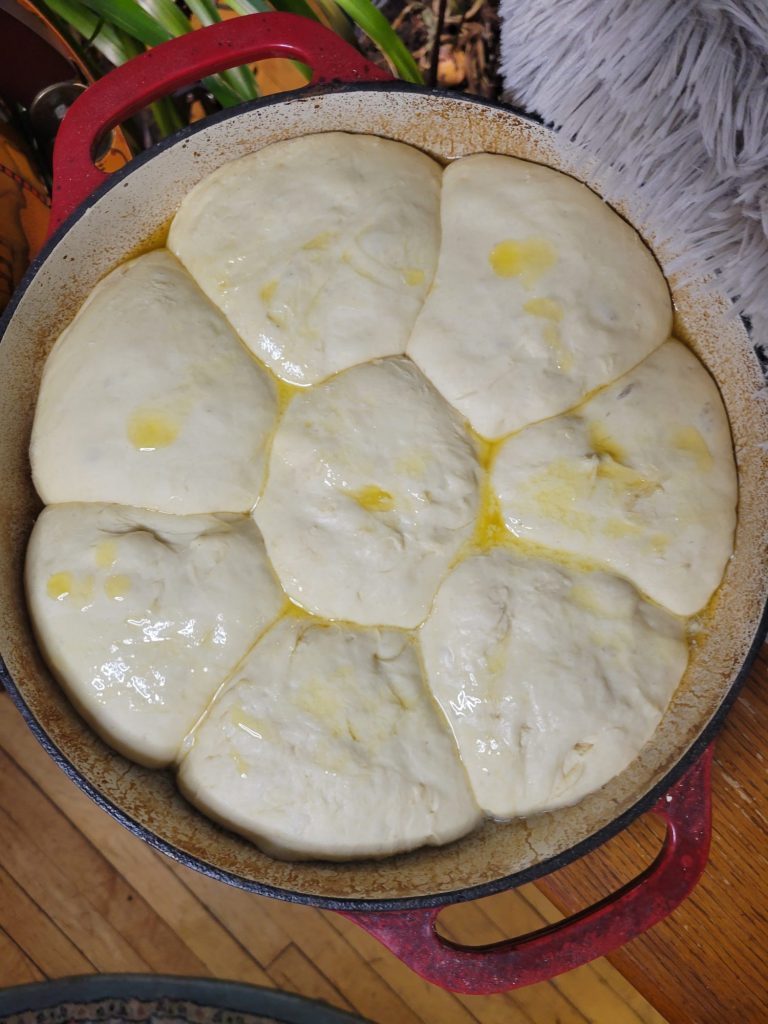
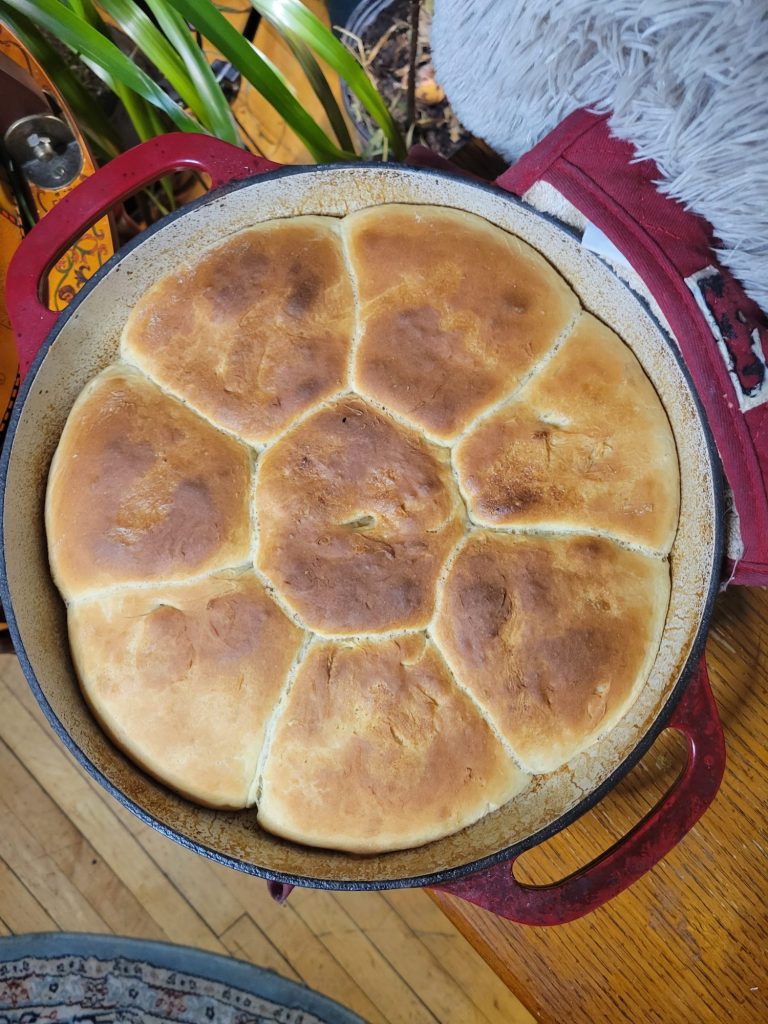
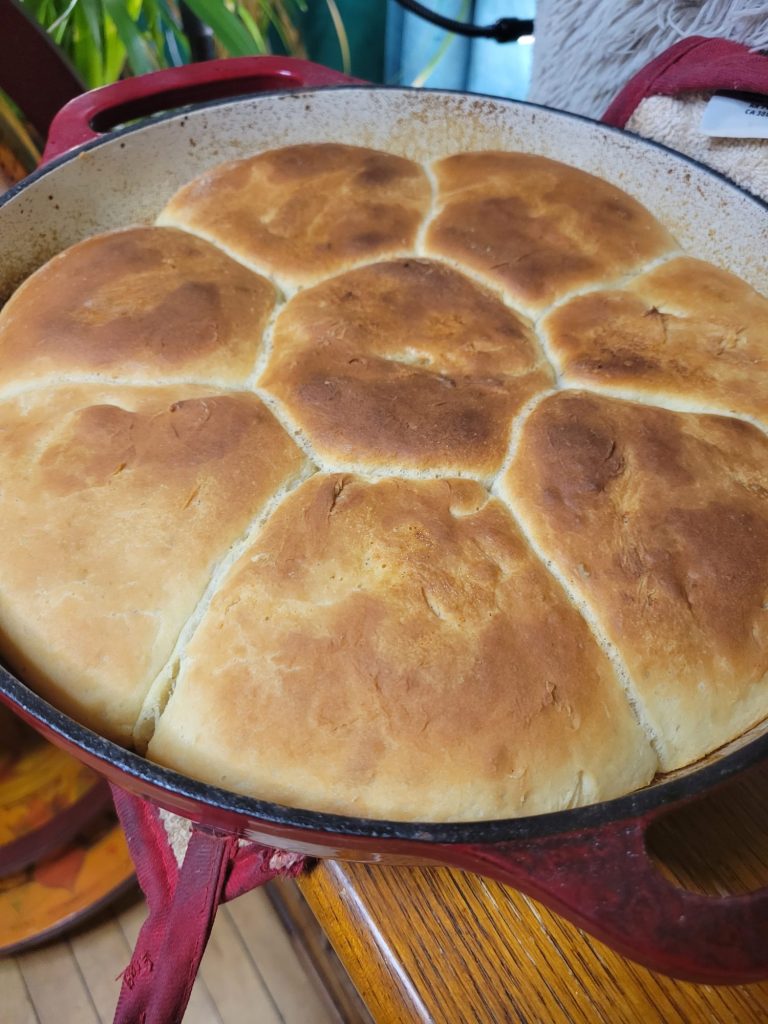
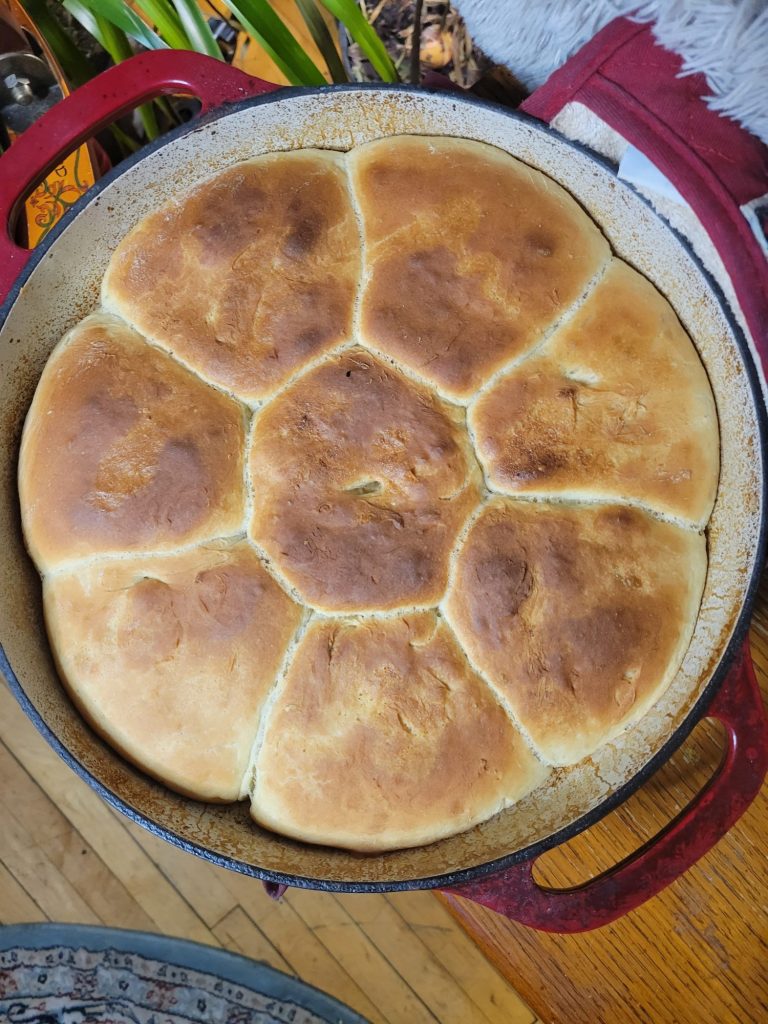
Every now and then I make these as pull-apart rolls in a large, shallow Dutch oven. Use the lid to cover the dough for the second proof and then cook uncovered. You can also do a butter wash, rather than an egg wash. Especially given the cost of eggs, today!
What to Make w/ Brioche Rolls
I specifically made these brioche rolls for salmon burgers. So, naturally all of my recipes with them are to these effect! But they do make a great buttered roll for holiday meals or just to have as toast or in a sandwich.
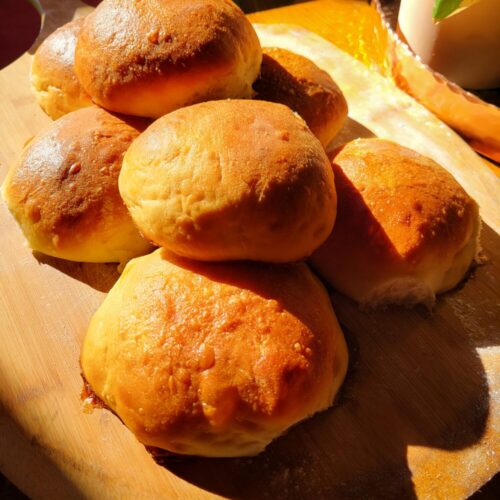
Brioche Rolls w/ Milk & Bread Flour
Equipment
- Large Bowl w/ Lid
- Aluminum Foil or Towel
- Oven
- Baking Sheet
- Second Baking Sheet or Dish
Ingredients
- 240 g. warm water ~100°F (1 c.)
- 45 g. warm milk or water (3 tbsp.)
- 6 g. instant yeast (2 tsp.)
- 30 g. sugar (2 ½ tbsp.)
- 2 large eggs (divided, 1 + 1)
- 375 g. bread flour (3 c.)
- 40 g. all-purpose flour (1/3 c.)
- 9 g. salt (1 ½ tsp.)
- 35 g. unsalted butter softened (2 ½ tbsp.)
- oil to grease baking sheet (or parchment paper)
Instructions
Dough
- Combine warm water, milk, yeast, and sugar. Let rest for 15 minutes, or until the yeast begins to bubble.A typical packet of yeast is 2 ¼ teaspoons, so just remove 1/4 teaspoon if you don't have bulk yeast and are using the packets.
- Meanwhile, whisk together bread flour, all-purpose flour, salt, and butter in a large bowl.The butter shouldn't be melted, but should be softened enough to mix into the dough without being in one large chunk! It should, at the very least, create little shaggy balls until the liquids are added.
- After the yeast has proofed, whisk one of the eggs into the yeast (the other egg is for an egg wash later on).
- Mix the yeast/egg mixture into the flour mixture.In a mixer with a dough hook attachment, this only takes about 5-8 minutes on low. By hand, this takes about 15 minutes. This is a very wet dough and much better suited for a stand mixer. My mixer is in storage, though. So, I did this by hand! I started with a fork to get the butter and everything smoothly incorporated and then switched to mixing it with a wooden or very strong silicone spatula.
- Cover dough and let proof for 2 hours, or until doubled in size.
Second Rise
- Thoroughly grease a baking sheet.
- Roll the dough out onto a lightly floured surface, divide into 8 equal pieces, and shape into rounds.Do this as quickly as possible, without handling the dough any more than necessary.
- Roll the pieces into rounds and place on the baking sheet. Cover again with a dry towel, saran wrap, or aluminum foil.You can alternatively use parchment paper and then don't have to worry about greasing the baking sheet. I don't have parchment paper and am not really that fond of it. But it does mean that you don't have to use oi and don't have to worry about oil staining your towels. I also sometimes just use a large, shallow, Dutch oven. It really doesn't matter, though, as long as the dough is covered enough to continue to proof.
- Let rise for another hour and a half, or until doubled in size.
Bake
- A half hour before the dough is through its second proof, fill a second baking sheet or dish with water. Place it in the lower third of the oven and preheat to 400 degrees Fahrenheit.It's important to preheat the oven with water ahead of time in order to produce enough steam inside of the oven to keep the bread moist while baking.
- Mix the second egg with a splash of water. When the dough is done proofing, spread lightly on top of the rolls.
- Bake the rolls for 15-20 minutes, or until the crust is lightly crisp and golden brown.
- Let rest until cool before slicing. This tends to take about 20-30 minutes.
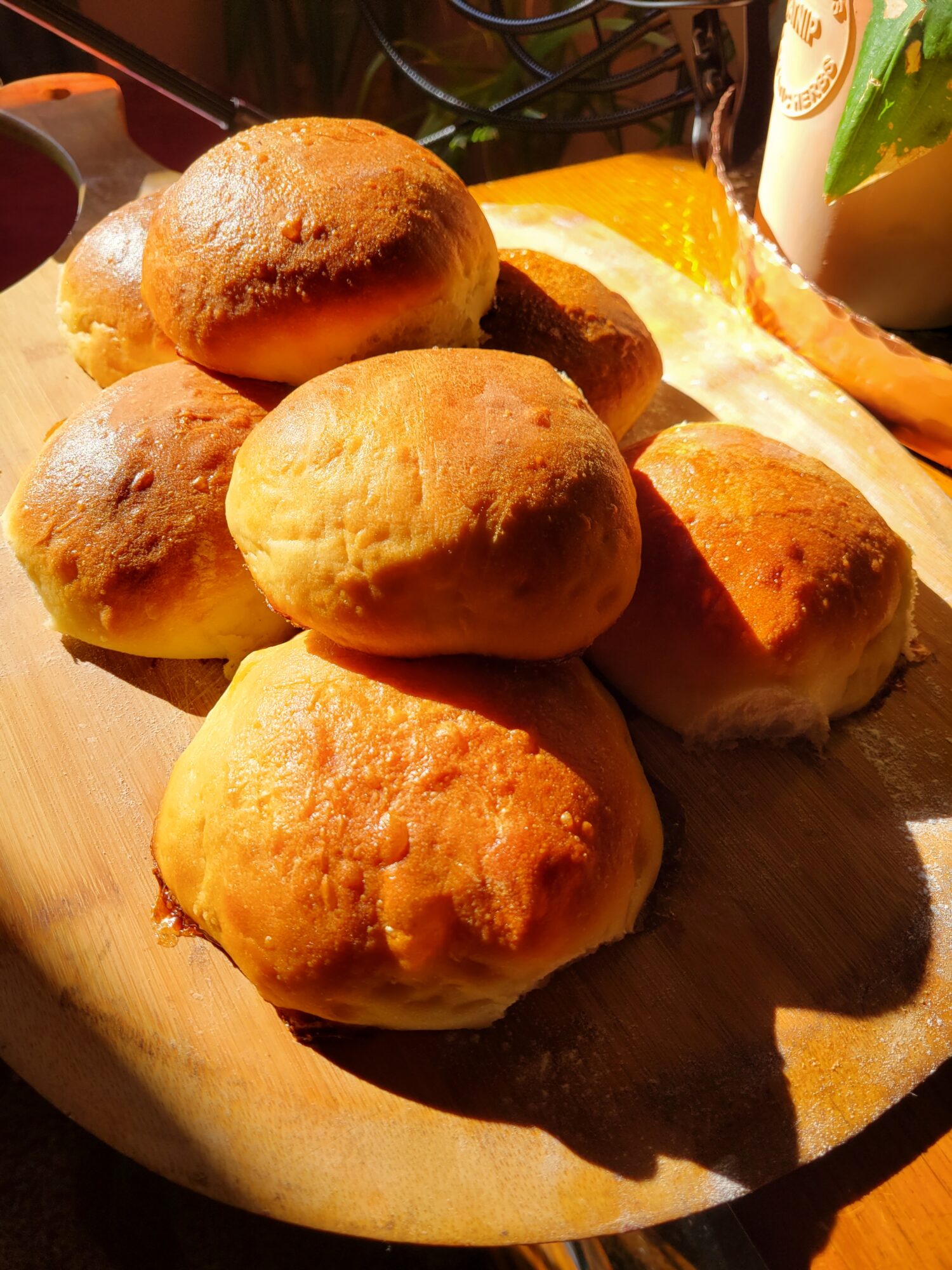
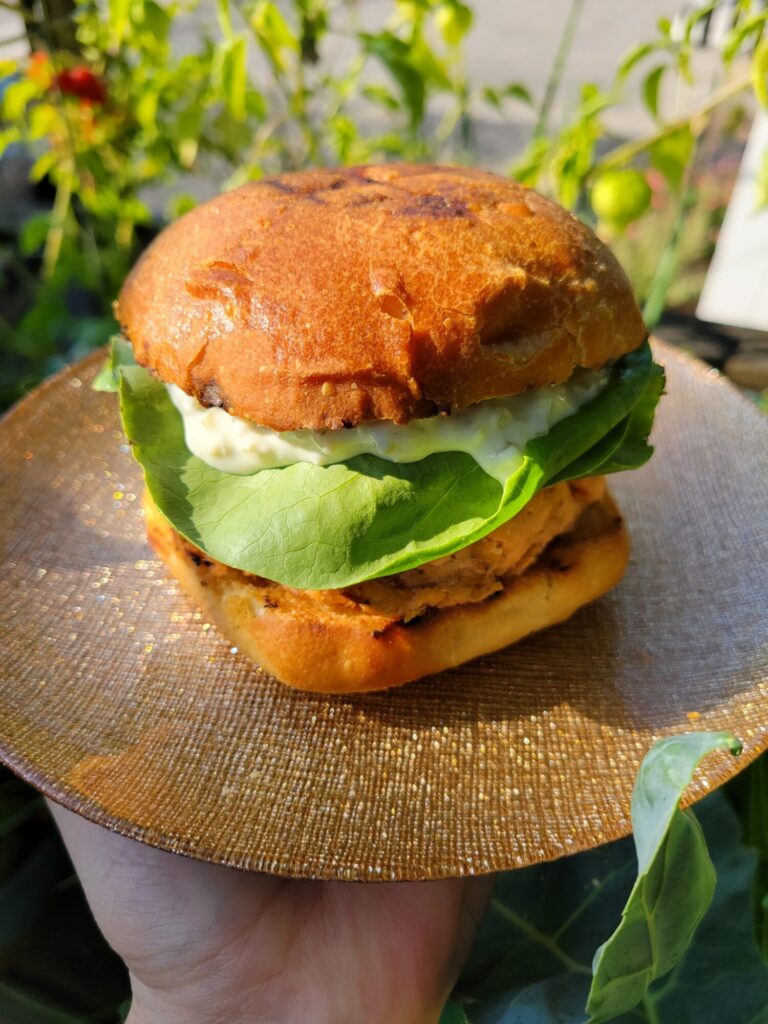
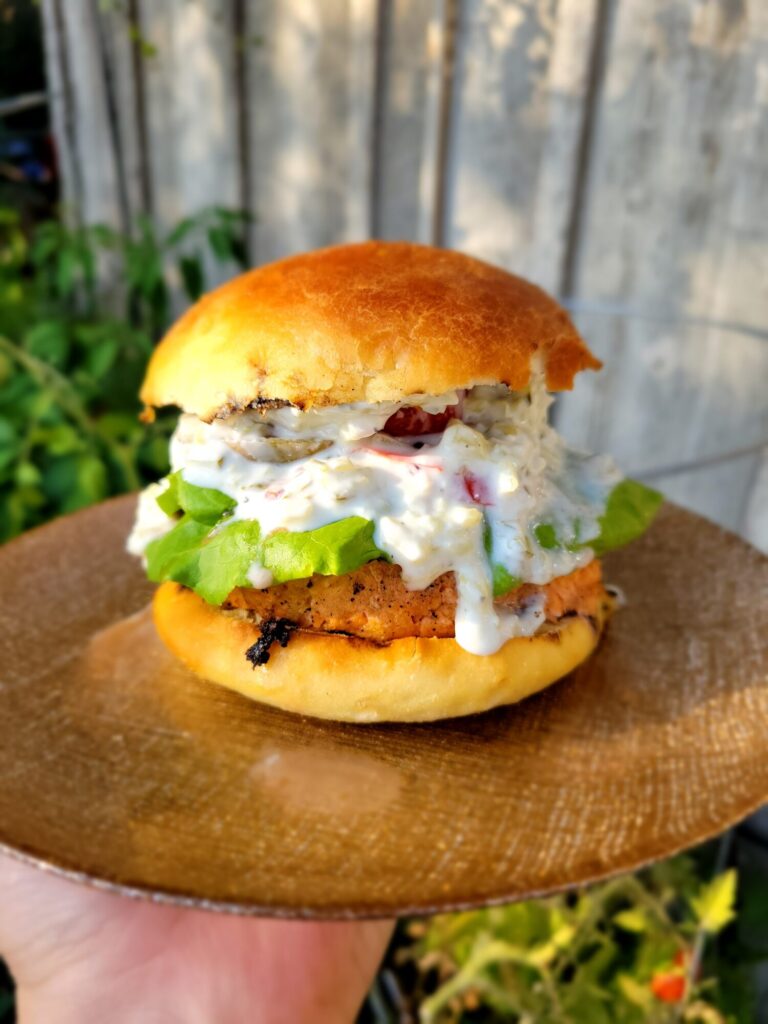
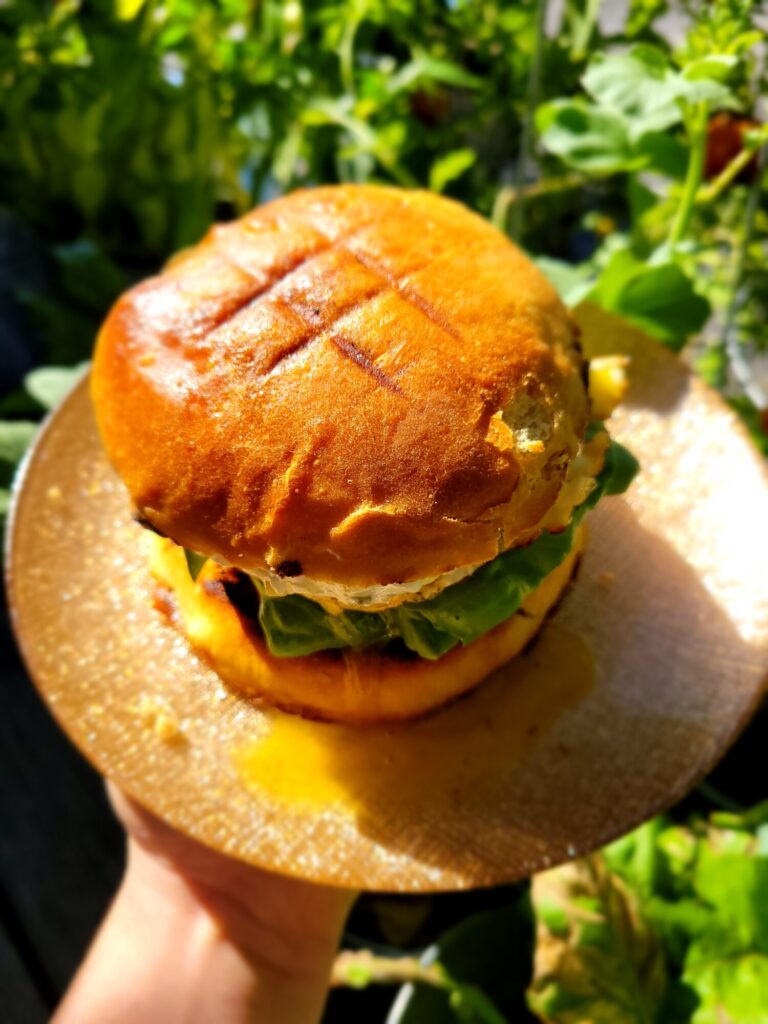
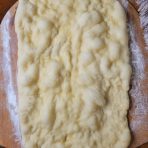
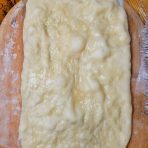
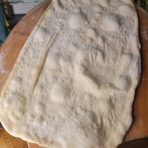
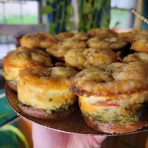
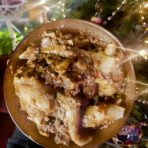
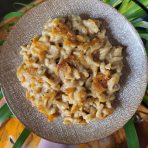
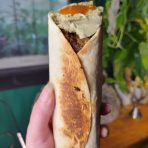
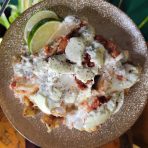
Leave a Reply